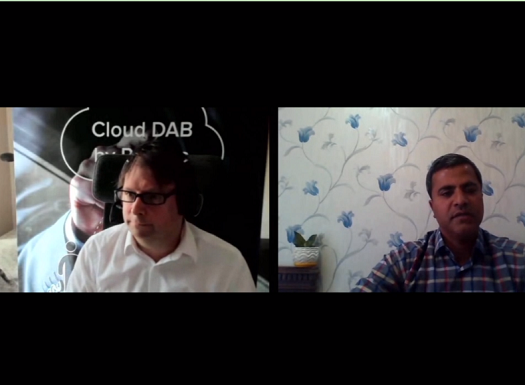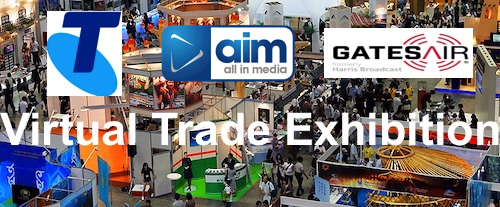Lars-Peder Lundgren, Marketing Director, Paneda made a presentation on “DAB Head-End systems overview, typical setups, next generation & features” in the last session of the first day of this year’s ABU DBS.
The session was titled “Cloud revolution in the media industry” and chaired by Hamid Dehghan Nayeri, ABU Technical Committee Chairman, Director, International Technical Affairs & ABU Technical Liaison Officer, IRIB-Iran.
Lars-Peder has a degree in Applied Technology from the University of Linköping. He fell in love with DAB 1997 when he was involved in the first DAB trials, and since that he has been involved in a great number of DAB installations in over 40 countries. Today, as Marketing Director for Paneda, he spends most of his time to promote DAB technology world-wide.
Head-end systems involve multiplexers, audio encoders and different ways to insert meta data. When you connect your audio to encoders, you perform DAB+ encoding, and the meta data – text and pictures, connected to the data generator. They are all connected to the multiplexer system, which composes an output signal for transmission.
There are three typical ways to realise a DAB head-end system. First is the traditional hardware setup, second is the server-based platform – which is an in-house cloud system and third is a cloud-based system, where DAB can be installed using a cloud such as Google or Amazon data centres.
The advantage of cloud-based platform is that there is no hardware needed, it is secure and you can pay per month as you go.
According to Lars-Peder, 10 percent of Paneda’s customers prefer the dedicated hardware platform, 80 percent choose the in-house data cloud system and 10 percent prefer a fully cloud system.
“The benefit of using a server-based platform is that it’s a virtualised solution, where one can install a number of DAB head-end systems. We have customers running 10 multiplexes with 100 audio encoders. A centralised system has all the encoders and multiplex systems installed in one place and you feed audio from the studio. It’s a simplified setup with very little maintenance and you can use your existing IP infrastructure for audio. The disadvantage is that it may be a challenge to feed audio into that system from a distance and to preserve the audio quality.”
“A decentralised setup has the multiplexer centralised but decentralised audio encoders. You put encoders at the studio and they encode straight in to DAB+. You can use your existing IP infrastructure and it will provide the best audio quality, because you code the source straight into DAB+. But it requires more equipment, more maintenance and slightly more complex.”
In the last couple of years, DAB head-end systems have undergone many improvements. Today, most systems are connected to the internet, so security is in focus. Systems are also more user-friendly with a focus on redundancy and simplification.
Another new feature is Virtual Provider through which a number of radio stations sharing the same platform can now log into the system and manage their part. It splits the capacity of the multiplexer, which is one of the key benefits of the modern DAB system.
When Hamid asked about the number of radio stations one can put in DAB+, Lars-Peder said it is a matter of audio quality, it’s decided by bit rate you specify per service but the most common is between 15 and 20 stations at near CD quality.
Subscribe to the radioinfo podcast on these platforms: Acast, Apple iTunes Podcasts, Podtail, Spotify, Google Podcasts, TuneIn, or wherever you get your podcasts.


